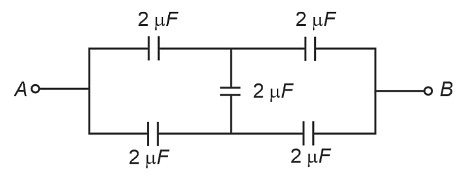Expressed Sequence Tags (ESTs) refers to
Expressed Sequence Tags (ESTs) refers to
All genes that are expressed as proteins.
All genes whether expressed or unexpressed.
Certain important expressed genes.
All genes that are expressed as RNA.
The Correct Option is D
Solution and Explanation
ESTs are short DNA sequences derived from the complementary DNA (cDNA) of the messenger RNA (mRNA) molecules. They represent portions of expressed genes, providing insight into which genes are being actively transcribed and translated into proteins within a specific cell or tissue. ESTs have been used for gene discovery, expression profiling, and mapping genes to specific chromosomal locations.
Therefore, The correct option is (D): All genes that are expressed as RNA.
Top Questions on Human genome project
- Select the observations drawn from the human genome project which are correct.
(A) The human genome contains 3164.7 million bp.
(B) The average gene consists of 3000 bases.
(C) Total number of genes is estimated at 30,000.
(D) The functions are unknown for over 50% of discovered genes.
(E) Less than 2% of the genome codes for proteins.- CUET (UG) - 2024
- Biology
- Human genome project
- In a laboratory, if 50 Drosophila out a population of 250 die in a week then the death rate of Drosophila is _____ individual per Drosophila per week.
- CUET (UG) - 2023
- Biology
- Human genome project
- According to Human Genome Project (HGP), the total number of genes in human genome is estimated at 30,000 the number of genes present on Y-chromosome are
- KCET - 2019
- Biology
- Human genome project
- What is not true for genetic code?
- MU OET - 2012
- Biology
- Human genome project
- The total number of nitrogenous bases in human genome is estimated to be about
- AIIMS - 2004
- Biology
- Human genome project
Questions Asked in NEET exam
- Match List I with List II.Choose the correct answer from the options given below:
List I
(Spectral Lines of Hydrogen for transitions from)List II
(Wavelength (nm))A. n2 = 3 to n1 = 2 I. 410.2 B. n2 = 4 to n1 = 2 II. 434.1 C. n2 = 5 to n1 = 2 III. 656.3 D. n2 = 6 to n1 = 2 IV. 486.1 - NEET (UG) - 2024
- Bohr’s Model for Hydrogen Atom
- Two bodies A and B of same mass undergo completely inelastic one dimensional collision. The body A moves with velocity v1 while body B is at rest before collision. The velocity of the system after collision is v2. The ratio v1 : v2 is :
- NEET (UG) - 2024
- Average Velocity and Instantaneous Velocity
- In the following circuit, the equivalent capacitance between terminal A and terminal B is :

- NEET (UG) - 2024
- Capacitors and Capacitance
- Match List I with List II:Choose the correct answer from the options given below:
List I List II A Citric acid cycle I Cytoplasm B Glycolysis II Mitochondrial matrix C Electron transport System III Intermembrane space of mitochondria D Proton gradient IV Inner mitochondrial membrane - NEET (UG) - 2024
- Glycolysis
- Consider the following statements A and B and identify the correct answer:

A. For a solar-cell, the I-V characteristics lies in the IV quadrant of the given graph.
B. In a reverse biased pn junction diode, the current measured in (µA), is due to majority charge carriers.- NEET (UG) - 2024
- P-N Junction
Concepts Used:
Human Genome Project
The Human Genome Project was an international research effort designed to map out the DNA sequence of an entire human genome. It was the first undertaking of its kind and took over a decade to complete. The goal of the Human Genome project was to sequence and identify the entire Human genome. And then store the entire genome information in a database. The Human Genome Project required improvement tools for data analysis.
The Human Genome Project (HGP) was an international, collaborative research program whose goal was the complete mapping and understanding of all the genes of human beings. All our genes together are known as our "genome."
Goals of the Human Genome Project
The HGP set out to establish the following goals:
- First, to identify all the approximately 20,000-25,000 genes that make up the human DNA.
- Map out the genome sequences of the 3 billion chemical base pairs that comprise the human DNA.
- Ensure the storage of the derived information in genome sequence databases.
- Optimize the tools required for the data analysis process.
- Handle the ethical, legal, and social issues (ELSI) that may arise during the project.
The shotgun phase of the Human Genome Project itself consisted of three steps:
- Obtaining a DNA clone to sequence
- Sequencing the DNA clone
- Assembling sequence data from multiple clones to determine overlap and establish a contiguous sequence
Impact of Human Genome Research
The Human Genome Project will entirely reshape the approach to all biomedical research as well as therapeutic and preventive health care. The development in fields like bioinformatics and biostatistics will allow for better pattern detection and analysis of genetic disorders.
Students interested in a deeper analysis of the Human Genome Project can visit the official website created by the National Institute of Health.



